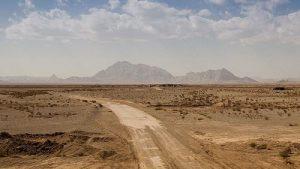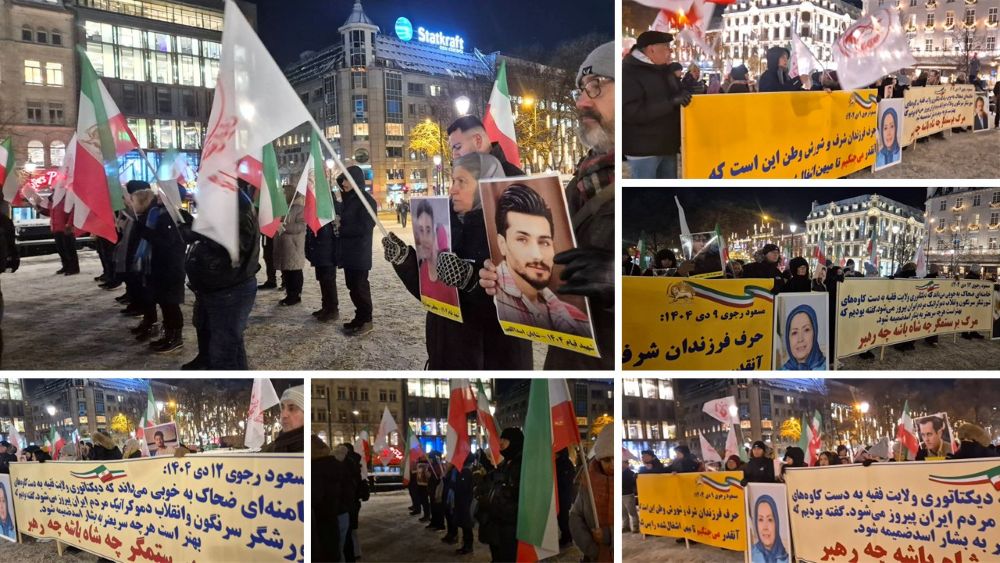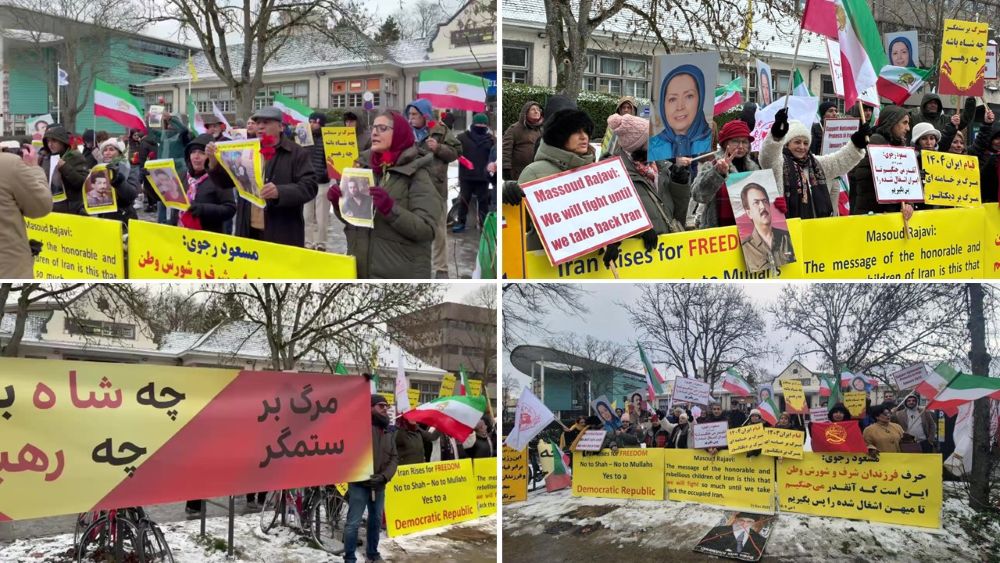Iran Events
Maryam Rajavi: Toppling the Regime is the Only Solution to Saving Iran’s Economy
In her message to the protesting bazaaris of Tehran, Isfahan, Shahr-e Ray, Tabriz, Qeshm, Karaj, Bandar Abbas, Rasht, Shahriar, and a number other cities in Iran, Mrs. Maryam Rajavi, the president of the National Council of Resistance of Iran saluted the protesters for rising up again and resuming their strikes against the usurper clerical regime.
In this message which was published on Monday, July 30, Mrs. Rajavi said:
“The uprising which started last December in dozens of major cities of Iran contiues to date, thanks to the efforts of our people across the country, from Kazerun to Isfahan, Khuzestanand Baneh, from truck drivers and truck owners, to the workers of Haft TappehSugarcane factory and the Steel Factory of Ahvaz, and merchants of bazaar in various cities. Today, the bazaaris and the truck drivers and owners echo the voice of the Iranian people against the mullahs’ destructive rule.
The disastrous state of the economy and the foreign exchange market is the direct product of the regime’s depravity. The free fall of the value of Rial to the world’s lowest is a consequence of the rule of the mullahs who have destroyed everything to preserve their power.
It is the consequence of squandering Iran’s wealth and revenues on the criminal war in Syria, and on export of terrorism and fundamentalism to other countries.
It is the consequence of the devouring of the greater portion of Iran’s economy by Khamenei, the IRGC and state-backed foundations, which has left no business opportunity for bazaar merchants and has put the lion’s share of Iran’s consumers market at the disposal of major shopping centers owned by the IRGC and other regime factions.
The mullahs have no solution for containing this chaotic situation and all of their measures and plans have failed. Sacking the Central Bank’s president, arresting bazaar merchants, spreading lies and false pretenses are no longer effective. Iran’s crumbling economy cannot be saved unless by toppling the regime.
Expanding the protests to bring down the corrupt regime of theft and destruction is the only solution.
I urge the valiant youth of Iran and the resistance units to support the strikes of bazaaris.
As Massoud Rajavi said, “The people of Iran are the ones who have the final say, with their arisen resistance units, the revolting cities, and the National Liberation Army.”
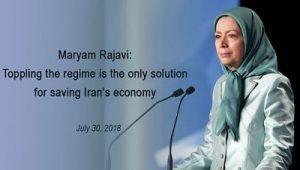
The inhuman clerical regime has in recent weeks razed the graves of the victims of the 1988Massacre and other victims of execution in the 1980s in Ahvaz & is constructing roads in their place in order to remove all traces of these graves.
.@Maryam_Rajavi:
The inhuman clerical regime has in recent weeks razed the graves of the victims of the #1988Massacre and other victims of execution in the 1980s in Ahvaz & is constructing roads in their place in order to remove all traces of these graves.https://t.co/3FspCiyi80 pic.twitter.com/c5fimgoi8L— Iran Freedom (@4FreedominIran) July 28, 2018
Larijani Brothers Make Baseless Claims About Iran’s Economic Downturn
While the Iranian national currency, the rial, has lost more than half of its value against the U.S. dollar in just four months, Iran’s authorities are still trying to blame the drop on “foreign enemies.”
Judicial chief Ayatollah Sadeq Amoli Larijani has described the downfall of the rial and hiking gold prices as “suspicious puppetry” run by “dirty hands behind the curtain.”
Echoing the comments of his younger brother, parliamentary speaker Ali Larijani insisted hostile foreign intelligence services have focused on Iran’s gold market.
“The enemies’ intelligence services in disguise are after damaging Iran’s economy,” Ali Larijani told a parliamentary meeting on July 30.
Without any elaboration or evidence, Ali Larijani said, “Since the foreign intelligence services know that any disruption or fluctuation in Iran’s gold and forex market damages the national economy, they have focused on this area.”
In an orchestrated way, most of Iran’s authorities, including directors of the Central Bank of Iran (CBI), have repeatedly attributed the historic downfall of the rial and soaring gold prices to “enemies,” saying the recent developments are not compatible with the realities of the Iranian economy.

IRAN: Shopkeepers, Traders Strike in Many Cities, Tehran Bazaar Merchants Arrested
Mrs. Rajavi’s call for public support for strikers and immediate action to release the arrested
After the dollar exchange rate passed 12,000 Tomans on Monday July 30th, many bazaar merchants and shopkeepers in Tehran and various cities went on strike in protest of the catastrophic situation of the country’s economy and the destruction of their assets, and refused to open their stores.
In Tehran, shops in the goldsmith, carpet, iron and building materials bazaars, Alaeddin and Charsu shopping centers, as well as manufacturers and shopkeepers in the Ray and Shoosh bazaars, and the shoe market on 15 Khordad Ave. and Toopkhaneh Square went on strike.
In fear of the spread of protests, the repressive forces, including police, IRGC and plainclothes mercenaries were stationed at the shopping centers in the Grand Bazaar of Tehran as well as in the central squares and avenues of Tehran and around Tehran Bazaar, Shoosh Square, Sirous Street, Vanak
and Enqelab squares, Vali-e Asr intersection, and the areas where the exchange shops are located such as Toopkhaneh, Ferdowsi Square and the Istanbul intersection and Manuchehri Street. They threatened and pressured the bazaar merchants to open their shops. Several bazaar merchants who refused to open their shops as well as a number of money changers on Ferdowsi and Manouchehri streets were arrested.
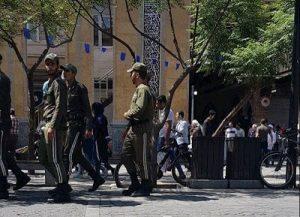
Iran’s Truck Driver Strike Enters its 9th Day
Iranian truck drivers in different cities across the country are striking for the ninth continuous day. Reports indicate that more than 130 cities in 31 provinces across the country have already joined the nation-wide truck driver strikes. Some of the better-known cities include Tabriz, capital of East Azerbaijan province, Isfahan, capital of Isfahan province, Mashhad, the second largest city of Iran and capital of Razavi Khorasan province.
Gas stations shut down due to lack of gas supply
On Monday, gas stations in Iran’s Qazvin province and cities west of Mazandaran shut down or were on the brink of shutting down because no gas supplies were available. Reports indicate that long queues of vehicles are forming in front of many gas stations. In one instance in Lahijan, vehicles made a several kilometers long queue in from of a gas station.
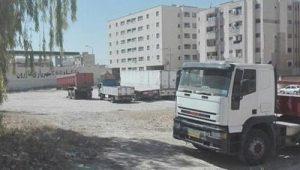
IRAN: Strike, Protest in Isfahan
Beginning this morning, Tuesday, July 31, truck drivers and owners as well as large group of people and youth in the city of Isfahan have been staging a protest against spiraling high prices, repeated power outages and inhuman policies of the clerical regime in the city’s Amirkabir (now called new Shapour) industrial district. They subsequently marched toward the city’s main streets.
Shop keepers have stopped work and all shops are shut down. Enraged over the runaway inflation, high prices, corruption and repression, the crowd were chanting: “Death to high prices, death to unemployment,” “death to the dictator,” “dignified Shapouris, support us, support us,” “dignified Iranians, support us, support us,” and “incompetent officials, resign, resign.”
Referring to the regime’s hollow promises, they are chanting “these are all lies.” The city’s industrial workers are taking parts in the demonstration by carrying a placard protesting against high prices and terrible living conditions.
A large group of repressive forces and anti-riot units have been stationed on the scene and on different streets to disperse the crowd and prevent its expansion.
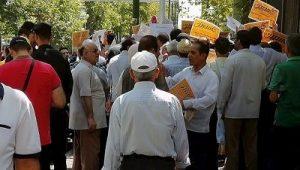
Iranian Regime Directly Responsible for Water Crisis
Experts say that Iran is currently experiencing the most extreme and intense drought of the past four decades.
It is believed that at least 40 percent of drinking water in urban areas is being compromised because of failing pipelines that have not had required maintenance and because of the dilapidated systems and networks of waterways.
Furthermore, it has been estimated that almost a third of agricultural water is being lost because of the abandoned and ancient irrigation methods that are in place.
The government is directing water away from some areas, including some very populated areas. Not only is this having a major impact on drinking water supplies, but the impact on agriculture is also severe. Many are losing their livelihoods because of this.
The water crisis in Iran is quite simply a consequence of the rule of the clerical regime. Environmentalists have been warning about the declining situation for many years. The people of Iran have described the local officials that are responsible for the crisis “local mafia” and it is hard to think of a more warranted term for the criminals that are destroying the environment and the lives of many. They say that Iran is being stripped of its resources and it will soon be nothing but a dry desert.
